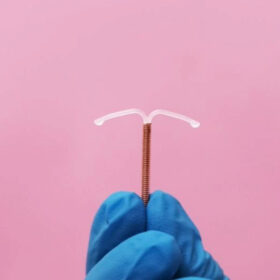
Changing your contraception: how to switch methods
In this article
What's the lowdown?
The safest way to change your contraception is under the guidance of a medical professional – your healthcare professional should be happy to answer any questions or address any concerns you may have
Switching your method of contraception requires time and planning
If you ever find yourself in doubt, use extra protection such as condoms which are accessible in many supermarkets and pharmacies, and are often available free of charge at sexual health clinics
When switching to any new method some side effects may occur – these often settle within 3-6 months
If side effects don’t improve, or you can’t manage them, go back to see your healthcare professional
Using contraception can be like a long-term relationship; with so many different options, it’s only natural to be curious about what else might be out there. There is a wide range of methods designed to meet the needs of different women.
Every woman is individual and just because your contraception may be working, this doesn’t mean it’s working for you.
Why should you change contraception?
There are a number of reasons why someone might decide to try a new form of contraception.
Side effects
Some women may experience side effects whilst using a specific form of contraception. These side effects may be physical or emotional and can include:
- acne
- weight gain
- headaches
- breast tenderness
- changes to your bleeding patterns
- mood changes
- changes to sex drive
Reliability
Women may also switch for more reliability, ease of use, or control of bleeding patterns. For example, a woman may switch to a hormonal coil (also known as the intrauterine system or hormonal IUD) if she forgets to take the pill some days. But to be clear, there is absolutely no need to change your form of contraception if you are happy with it or you think the benefits outweigh any downsides.
One thing to note is that it usually takes your body 3 to 6 months to adjust to a new method of contraception. For some women this adjustment can be accompanied by uncomfortable side effects, similar to those above. If you’re still experiencing unwanted or unmanageable side effects after 3 to 6 months, speak to your healthcare professional about how to manage the side effects or consider making a switch. And, of course, If you do experience any side-effects you are concerned about before the 3 to 6 month mark, reach out to your healthcare professional.
If you have read this far and are still interested in potentially trying out a new form of contraception, here is your go-to guide for what to expect when switching contraception.
What to consider when changing contraception
There are some logistics to consider when switching your form of contraception from one method to another. Timing is a key factor and it may take some time to actually make the switch. Most contraception requires a prescription, acquired either during a visit to your GP, pharmacy or from a sexual health clinic.
Check with your clinic whether virtual appointments are an option. If certain measurements, such as blood pressure and weight, are up to date and stable, it may be possible for your GP to issue an electronic prescription to your pharmacy for the combined pill, patch or ring. Switching brands of the combined pill may also therefore be possible following a virtual appointment.
If a face-to-face consultation is necessary you may be invited for one. If this is not possible, you may be offered an alternative, such as the progestogen-only pills, until you are able to make an appointment with your provider in person. You can access mini pills including Hana, Aizea, Cerazette and more on the NHS via the Lowdown (you’ll need to fill in a few questions first!).
A coil or implant requires a physical insertion or placement. The procedures may be accompanied by some immediate short-term side effects (like mild pain or cramping) and is a factor to consider when planning your switch. For coil insertion, the most common immediate side effect is cramping, with around 65% of our reviewers reporting pain. Similarly, tenderness or slight bruising has been reported following insertion of the implant. Every woman will have a different experience and it is important to listen to your body and do what feels best for you, even if this means taking the rest of the day a little more slowly than usual.
How to switch from one method of contraception to another
When considering making a switch, we recommend speaking to your healthcare provider. These switches are all about timing. Trying to figure out how to switch between different methods to make sure you are not at risk of pregnancy can be complicated.
There are correct ways to transition from one method of contraception to another depending on how reliably you’ve been using them. If you switch incorrectly, you may increase the risk of unplanned pregnancy – so it’s best to discuss this with a healthcare professional.
At The Lowdown we have a guidance article including tables for how to switch between each methods including:
- How to switch from the pill to a coil, implant or injection
- How to switch from the progestogen only pill to combined conrtaception, coil, implant or injection
- How to switch if you have missed pills or used a method incorrectly
How long does it take to adjust to a new contraceptive?
For some switches, barrier methods like condoms are used for a short period to maintain contraceptive cover and protect a woman from unintended pregnancy. This is because your new contraception may need some time to be able to provide its full protective effects. Most commonly this means using condoms during sex after starting your new form of contraception, until you can rely on it for contraceptive cover (usually 7 days).
Ensuring you use your existing contraception method correctly and consistently before you switch is also important. For example, there is no need for extra protection when switching to a new brand of pill immediately after completing the entirety of the old pack, with no gaps in between. However, when switching from the combined pill to a hormonal coil you may be advised you need to use extra protection such as condoms for 7 days after the coil is fitted, depending on where in your pill pack you are.
Our medical review process
This article has been medically reviewed for factual and up to date information by a Lowdown doctor.

